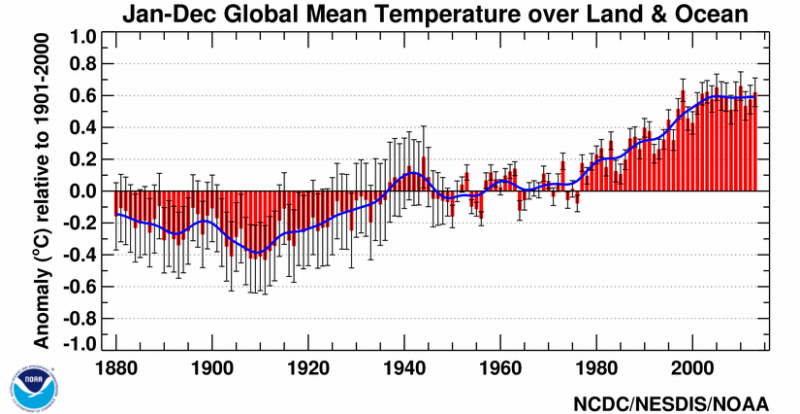None of that disproves the notion that "only by using homogenized data series can the long-term climatic trends be accurately detected" or that "the homogenized SAT data series of the stations have to be more carefully assessed and adjusted before they are to be confidently used in analyses of climate change."
So the process is valid and only needs to be refined. Furthermore, your posts have yet to demonstrate any proof that this is the result of any agenda other than trying to get the most scientifically accurate representation of the data.
The process is not valid if it requires continuing and ongoing adjustments to
the past, which we know is constant.
The reason the technique was probably accepted is that climatologists wanted to see rising temperatures, and it showed them just that, so it seemed to work. If it had shown declining temperatures (which it would if the sawtooths ran the other way, down slowly and up abruptly), they'd have abandoned it after the first few tries.
As Richard Feynmann said about cargo cult science, "The first principle is that you must not fool yourself — and you are the easiest person to fool."
Then comes validation, and what a mathematician would throw at the technique are various generated series of random walks, stochastic time-series curves that can serve as a statistically good analog for recorded temperatures, with differing levels of correlation between different data sequences that are standing for temperature curves at related sampling sites. Then discontinuities can be introduced into those series and the output of the homogenization algorithm can be checked against the unbroken data series. The technique will pass all those test with flying colors, because the statistically clean series used for validation wouldn't have the inherent saw-tooth pattern that makes the technique go all wonky, since there will be as many upward as downward discontinuities, and the series will have as much upward as downward drift.
So the technique makes sense, it will pass all sorts of validation tests that someone would throw at it, and it will screw up on real data-world and indicate that temperatures ripple backwards in time.
In normal science, when a glaring flaw is found in an algorithm or procedure, it is abandoned or corrected. In climate science, anyone who points out such a flaw is branded as a denier, a heretic, and a servant of Satan and the Koch Brothers. That's a serious problem, one that even climate scientists are complaining about.



